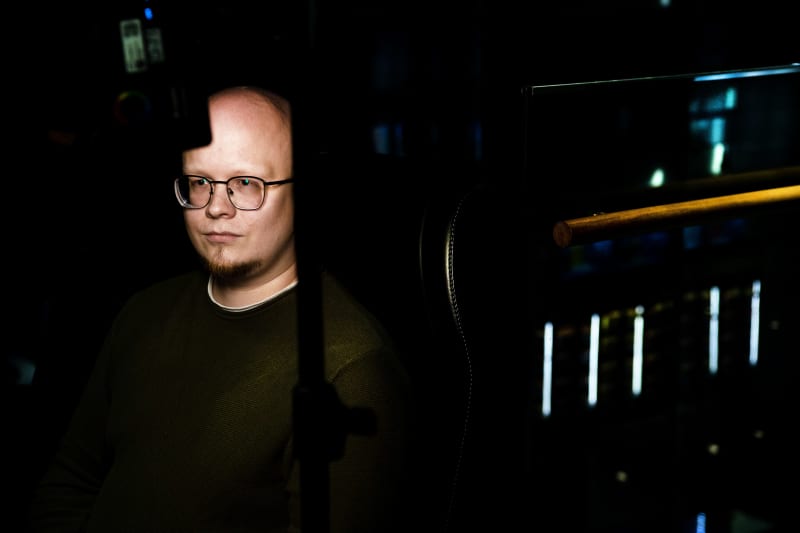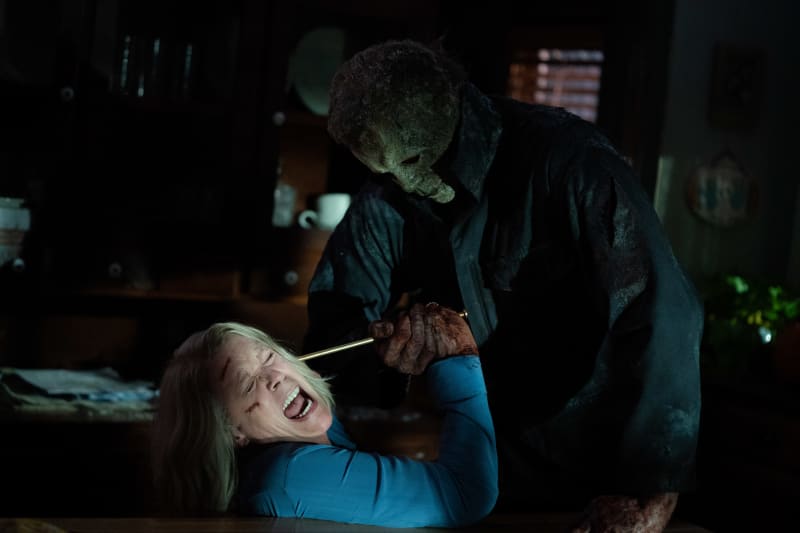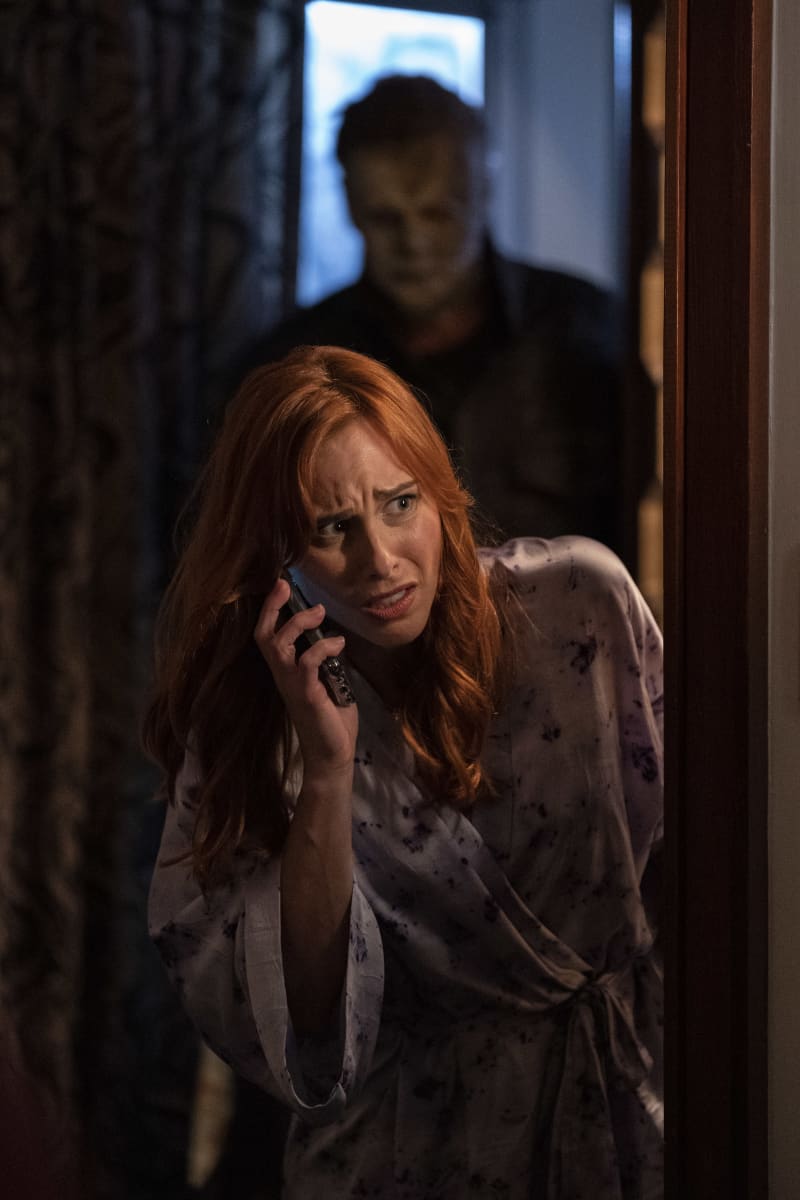Halloween Ends is being marketed as the end of a series of films launched by John Carpenter. We took two experts to see the film and assess the appeal of Halloween.
Four years ago, Michael Myers returned to Haddonfield.
This story avoids plot contrivances.
A reluctant masterpiece
John Carpenter was not particularly enthusiastic about *Halloween* (1978). The young promise who had directed *The Dark Star* (1974) and *Attack on the Police Station* (1976) would have preferred to make a big western, but there was no demand for such a film.
Hill produced, Carpenter composed the music and directed.

In the cheap and fast filmed *Halloween*, Michael Myers stalks sinful teenagers and kills them one by one. Laurie Strode, who survives, is a nerd and a virgin.
The soundtrack, and especially the simple theme song, became one of the most iconic in horror history.
For Miikka Kaitila, *Halloween* was a revolutionary experience at the age of ten.
– It made a strong impression in terms of aesthetics, how a lot can be achieved with a little.

*Halloween* was one of the first slasher movies. Their basic formula is simple: there is a murderer and a group of teenagers who are killed one by one.
Päivi Mehtonen is not the biggest fan of the genre, but she understands well why *Halloween* belongs to the horror canon.
– It is quite a traditional film in many ways: in its theme of a haunted maiden and in its monster character reminiscent of Frankenstein’s monster.
Simplicity is one of the reasons why Halloween has survived when so many other slasher movie franchises have faded away.
Michael Myers refuses to die
*Texas Chainsaw Murders* (1974) and *Halloween* are considered the cornerstones of the slasher genre, but the tradition has been equally influenced by Italian giallo horrors and the Canadian *Black Christmas* (1974). *Friday the 13th* (1980–) and *A Nightmare on Elm Street* (1984–) are also important.
Critics especially love *Texas Chainsaw Murders* and *Halloween*, but the vast majority of slashers are industrial serial productions. When the 1990s came, the genre, which suffered from a lack of ideas, started to die. *Scream* (1996), which satirized the legality of slashers, brought horror into a new, more self-aware era.
Still, Michael Myers refused to be fooled. Six Halloweens have already been made in the 2000s, and the films directed by Green are the most profitable in the series.
Why is Michael Myers still interesting?

Päivi Mehtonen talks about Myers as a classic moron who returns at certain intervals to torment the people of the small town. What matters is that Myers says nothing.
– He is beyond the language. It makes him interesting as a character. The audience is able to project onto him many feelings and fears, traits from many types of other characters.
Miikka Kaitila says that Myers is a tabula rasa, a blank slate, onto which filmmakers can project what they want.
Through the character of Myers, John Carpenter portrayed the 70’s fear of a serial killer lurking in an idyllic American suburb. In the sequels, Myers was revealed to be Strode’s brother, and this blood bond brought a special tone to the relationship between the characters.
Rob Zombie, on the other hand, tried to explain how a person becomes evil in his 2000s prequels, and showed Myers without a mask as well. The intention was that the viewer could at least partly understand Myers’ actions.
A trilogy of films about trauma and violence
A major change in the new films is that Myers is no longer Strode’s brother. If before the victims were those who were between Myers and Strode, now anyone can get the knife.
– In these new films, Myers is a character who moves forward and kills without even thinking about it. It’s a current fear, especially in the United States, where there are a lot of school shootings, says Kaitila.

And if in slasher movies you can cheer for murderers, the new Halloweens remind you that there is nothing admirable in violence. Almost every victim is given a backstory.
– In 2018’s *Halloween*, the first person Myers kills is a 12-year-old child. Right off the bat, we want to make it clear that while this character is a horror icon on some level, we shouldn’t be rooting for him.
The number of mass shootings in the United States continues to rise, and the new *Halloween* trilogy mirrors the destruction they wreak. *Halloween Ends* also looks for the reasons for everyday invisible violence.
More horror drama than slasher
*Halloween Ends* takes place four years after the events of *Halloween Kills*. Michael Myers has disappeared, leaving Haddonfield in disarray. The residents are afraid of Myers, who has risen to the status of a dark legend, and despise Laurie Strode, who brought fear to the small town.

Miikka Kaitila thinks that *Halloween Ends* makes radical decisions in terms of the series. It mainly reminds not so much of a slasher as of some kind of horror drama.
– A rather large part of the film is used to introduce the city’s characters and how they have reacted to the situation and live in the shadow of fear or the trauma of violence.
Päivi Mehtonen says that after the bad previous part *Halloween Ends*, the button of the nip will save the new trilogy. Still, in the end, it’s also quite traditional horror for a large audience. We are far from the popular art horror (*elevated horror*) represented by films like *Raw* (2016), *Get Out* (2017) and *Midsommar* (2019).
– Considering the tastes of the general public, the film must not deviate too much from tradition, the basic building blocks must remain the same.

Maybe the magic of Halloween movies is that they straddle the line between silly and smart. *Halloween Ends* is deliberately stupid in places. Some of the scenes are set up like a soap opera and the murders are so inventive that you still feel like cheering a little – or at least smiling.
But the themes are weighty. What is evil and how does it arise? Are some of us born evil, or does the environment make us that way? Can evil be contagious or inherited?
There are no absolute answers to big questions. The only thing that is certain is that evil will never die once and for all.
Hardly Michael Myers either.

